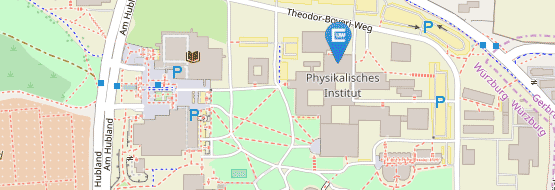Topological Magnetic Skyrmions investigated by STM
10.12.2015Kirsten von Bergmann, Universität Hamburg SFB Extra Seminar in SE 2 at 16:15
Magnetic skyrmions are topologically distinct from their ferromagnetic environment. They may form in an inversion asymmetric environment and are induced by a competition between magnetic exchange, Dzyaloshinsky-Moriya interaction, and typically the Zeeman energy. Scanning tunneling microscopy (STM) is a valuable tool to study the properties of nanometer-scale skyrmions [1]. In addition to measurements with spin-polarized STM tips skyrmions can also be detected with unpolarized electrodes due to spin-mixing effects in the non-collinear spin texture. We employ spatially resolved magnetic field dependent tunneling spectroscopy to identify this effect of non-collinear magnetoresistance and find that it scales with the angle between nearest neighbors [2]. With a non-magnetic STM tip it is also possible to locally switch the topology of a thin magnetic layer via the sign of the electric field between tip and sample. The combination of these two phenomena –electrical detection and electric field switching of topologically distinct states– could lead to a robust non-magnetic read- and write-head for future skyrmion racetrack-type devices.

Figure 1: The image shows a magnetic skyrmion in a hexagonal atom arrangement (transparent spheres). The cones represent the magnetic moments and point up (red) in the skyrmion center and down (green) around it. When the Dzyaloshinsky-Moriya interaction is induced by the symmetry-breaking of the interface the rotational sense of the skyrmion for a given system is always the same.
References
[1] K. von Bergmann et al., J. Phys.: Cond. Mat. 26, 394002 (2014).
[2] C. Hanneken et al., Nature Nanotechn. DOI: 10.1038/NNANO.2015.218.


